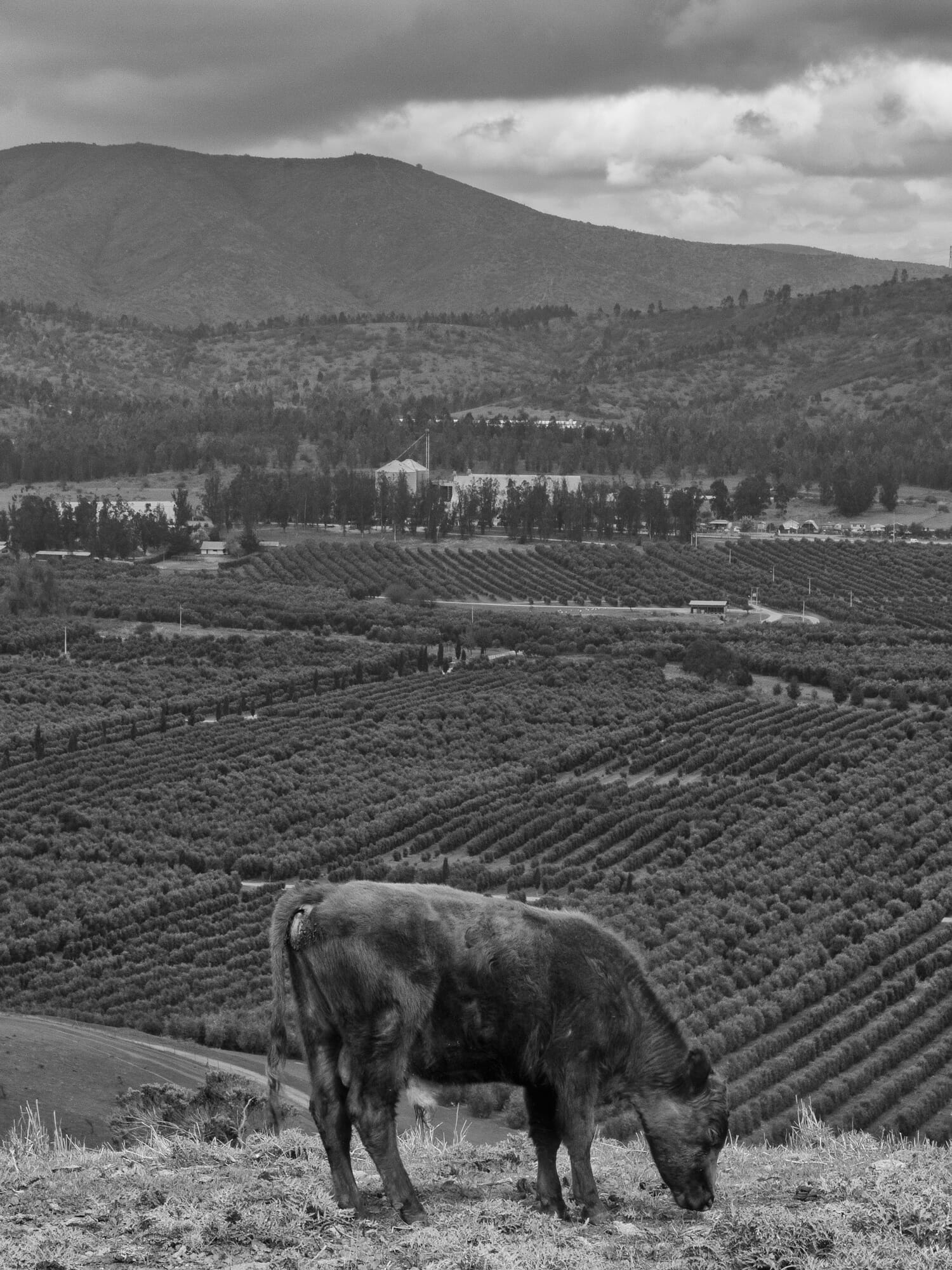Photo by Nicholas Coleman
Coleman Collection #23
PRODUCER
Olivos Ruta del Sol
CULTIVAR
Frantoio, Leccino, Coratina, Arbosana
Harvest Date
May 2021
REGION
O’Higgins, Chile
Olivos Ruta del Sol crafts an exquisite blend of fresh EVOO in Chile’s sixth region. The fruit is arranged in high density rows, machine harvested early in the season and swiftly cold-extracted in a modern Alfa Laval mill at 24 degrees Celsius to preserve its volatile aromas. The oil is then filtered to remove micro and macroscopic olive sediment and stored in temperature controlled stainless steel tanks sans oxygen.
Olivos Ruta del Sol “cold extracts” their oil. Unlike the traditional cold pressed method, where olives are crushed with granite wheels and stacked underneath a hydraulic press on fiber woven mats called fiscoli, the olive paste runs through a series of vacuums and centrifuges and is never exposed to oxygen. This faster and more sanitary modern extraction technique produces sharper oil from more ripe fruit.
Due to the ratio of olive cultivars, coupled with an early harvest, this oil has strong aromas of freshly cut grass and bitter herbs, ending with a pungent, lingering black pepper finish that slowly trails off in the back of your throat. The cause of this intense peppery sensation – considered an attribute of high-quality olive oil – is oleocanthal, a natural phenolic compound that has both anti-inflammatory and antioxidant properties. This style of oil, best utilized where the intent is to cut through and brighten up the dish, pairs well with vegetables, seafood, and any summertime fare straight off the grill. We also recommend that you smell and then taste it – on its own, independent of other foods – so that you can experience and then analyze its viscosity and flavor profile.
Chile continues to make inroads into the commercial wine market as a reliable source of quality wines in all price ranges and styles. Innovation, willingness to experiment and simplification of wine labels for international markets have all helped chile earn more wine shop shelf space and more listings in restaurants. Carmenere has emerged as the country’s most important grape variety, producing wines that embody ripe dark berry fruits with flavors of cassis, eucalyptus, and stewed blueberries.
In 2011, the Chilean Ministry of Agriculture created three terms to help identify and promote its wines. “Costa” for wines produced from grapes that grow near the coastline, “Andes” for wines produced in close proximity to the mountains, and “Entre “Cordilleras” for those produced between the two. These distinctions are helpful for consumers who can rely on “costa” wines to be slightly rounder and riper in body with bright fresh aromas and clean salinity, “andes” wines to be leaner and more aromatic and potentially less alcoholic, with “entre cordilleras” wines landing somewhere in between. This labeling legislation is highly progressive and is one example of Chile’s aim at marketing its wines in a clear and concise manner.



